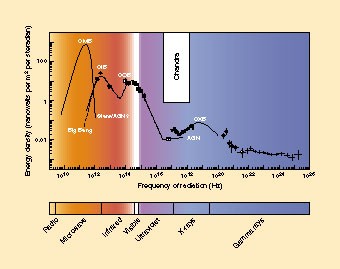
Peeking into the obscured Universe
- Select a language for the TTS:
- UK English Female
- UK English Male
- US English Female
- US English Male
- Australian Female
- Australian Male
- Language selected: (auto detect) - EN
Play all audios:
The question of whether the CXB is produced by uniform emission from a diffuse intergalactic gas at a temperature of a few million degrees, or by radiation from many individual sources, was
settled in the 1990s. First, the COBE satellite did not detect a tiny deviation from the perfect 2.7 K blackbody spectrum of the cosmic microwave background (CMB; Fig. 1), which would be
expected if the radiation were seen through a screen of hot intergalactic gas. Second, the majority of the ‘soft’ X-ray background (1 × 1017–5 × 1017 Hz) was resolved into discrete sources
by the X-ray satellite ROSAT. These sources are mostly distant active galaxies (active galactic nuclei, or AGN), containing massive black holes accreting matter from their environment4.
The X-ray background should represent the summed emission of all these discrete sources, but the CXB has a spectral shape completely different from the spectra of individual AGN measured at
X-ray frequencies. The spectrum of the CXB has a characteristic peak at about 1019 Hz (Fig. 1), corresponding roughly to the radiation that medical doctors use to ‘X-ray’ our bones, whereas
the AGN have a flat or slightly concave distribution over the whole X-ray range. A solution to this long-standing puzzle was proposed in 1989, namely that most sources of the X-ray
background could be heavily obscured by gas and dust clouds5, much like our bones absorb the doctor's X-rays. The higher-energy (‘hard’) X-rays can penetrate the obscuring clouds, whereas
‘soft’ photons are absorbed, so that the overall spectrum is different from that of individual AGN.
Anyone you share the following link with will be able to read this content: